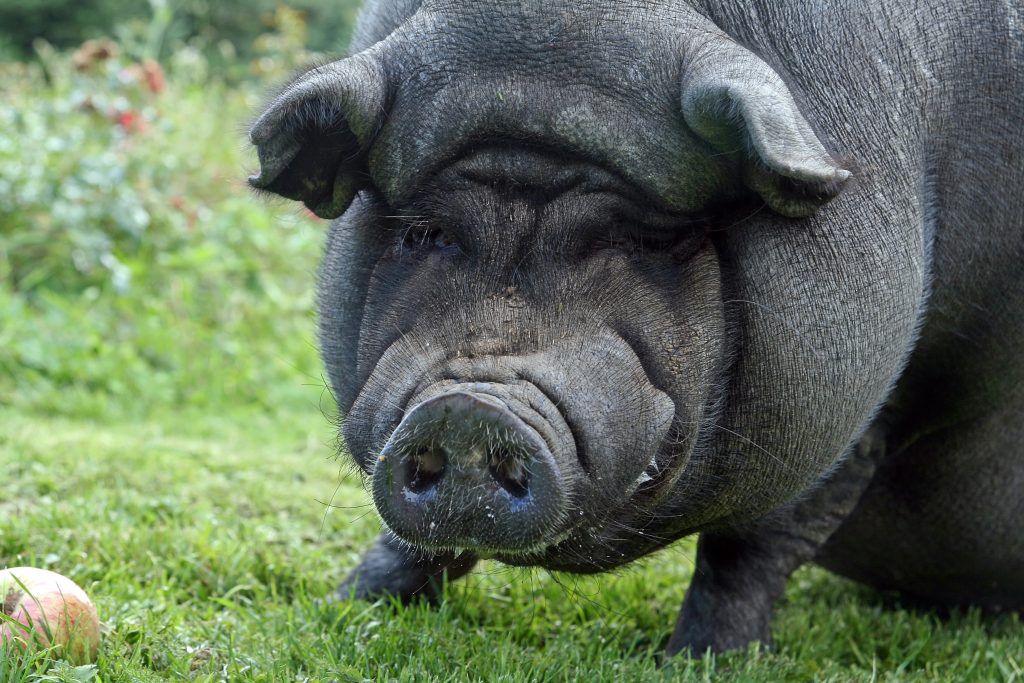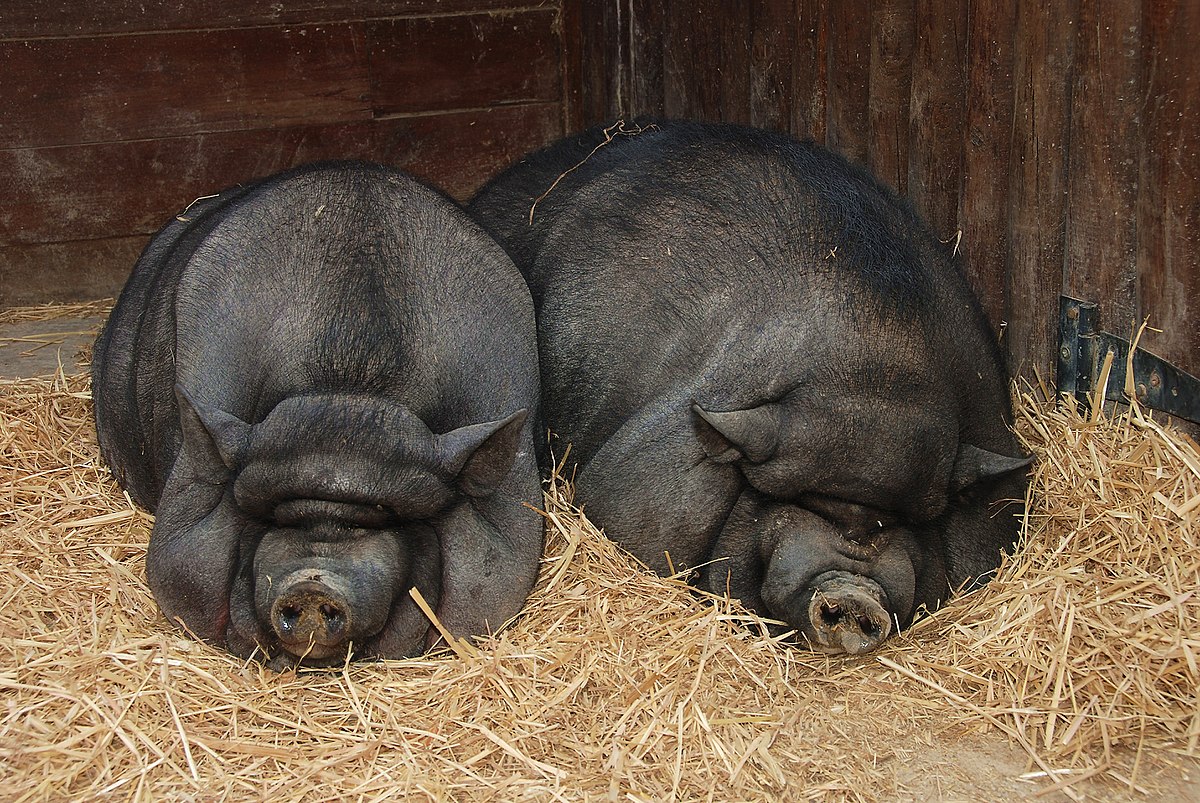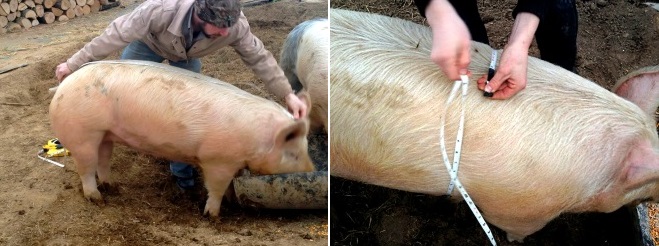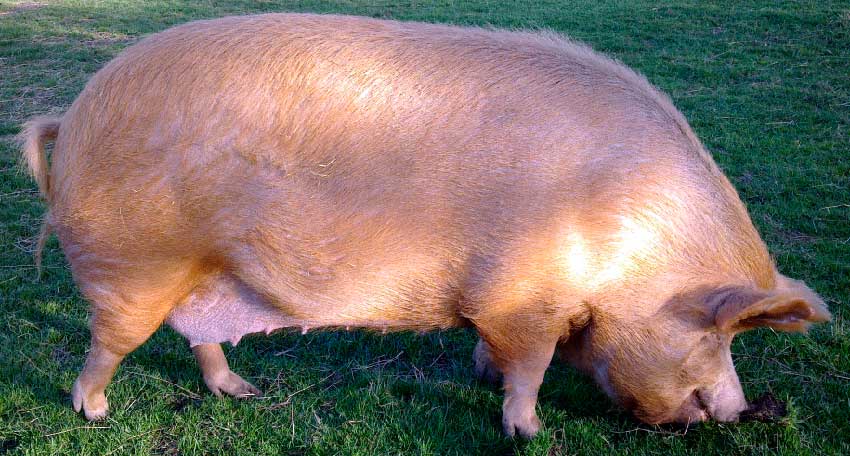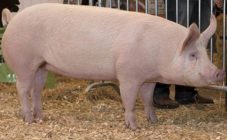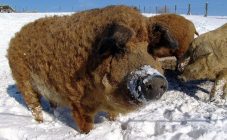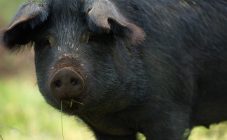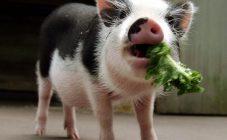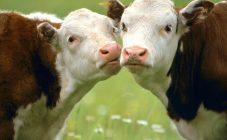Content:
In pig breeding, it is very important to timely calculate the amount of profit that can be obtained from this type of economic activity. To do this, you need to know the mass of the animal - live weight. But putting some wild boars on a weighing scale is an impossible task.
Therefore, the weight of an individual can be determined without measuring instruments. Various methods can be used, including a pig sizing chart. For this purpose, farmers, especially beginners, it is very desirable to understand the age characteristics and indicators of pigs at different periods of their rearing and to know how much the pig weighs without resorting to the help of scales.
Adult pig weight
The average weight of a pig directly depends on a well-formulated feeding ration. For its correct compilation, it is necessary to have knowledge of the mass of animals at various stages of their maturation. This is necessary in order to calculate the required amount of feed and find out how many times a day it is better to feed the pigs.
When a pig breeder knows these average values, he still should not forget about the existing difference between animals due to breed characteristics. For example, white pigs will weigh an order of magnitude more than Asian pigs of the same age.
How much does a pig weigh on average? It depends on several factors such as:
- Gender;
- The age of the animal;
- Features of the breed;
- The chosen feeding method.
The weight of an adult pig can be, subject to the necessary standards for its content, from 150 to 300 kg. There are record cases when an adult pig could reach a very large weight - about 1 ton. There are also dwarf species of these animals. Their weight is no more than 30 kg. Pig breeders generally prefer not to engage in such extremes.
A lot in weight depends on the breed of the pig. A boar of the steppe white breed can easily weigh more than three hundred kg, the Vietnamese variety - only up to 140 kg.
Slaughter pig weight
How much an animal will weigh depends to a large extent on what breed it is, and how correct the nutrition was during its growth. The breed of white pigs can easily reach a weight of up to 350 kg, however, pig farmers consider 200-250 kg to be a normal average weight. If fed ad libitum, a pig can weigh 100 kg at three months of age. Pigs of the Vietnamese, pot-bellied breed can weigh up to 150 kg, but they are usually slaughtered a little earlier, immediately after six months.
Pig meat yield
The live weight of an animal on the farm and the weight for slaughter are somewhat different concepts and should be calculated in different ways. The second parameter defines the pure meat after the carcass is cut. This should not include the lower legs, skin, and internal organs. This indicator is correspondingly less than the live weight of the pig.
It is not without reason that pig breeding is considered profitable when receiving meat products.This is due to the fact that there is not much waste during slaughter and subsequent cutting. The slaughter weight includes the carcass itself without the skin, head and in the absence of entrails. Slaughter weight is the ratio of live weight to that that comes out after cutting.
The average meat yield in pigs is considered to be from 60 to 70 kg with a live weight of an animal of 100 kg. With such a mass of bacon, you should get from 15 to 25 kg.
There are many different reasons for the yield of pure pork. Almost the main defining aspect can be called the breed meat properties of the pig. In animals, the breed of which is not too large, the meat yield is large when compared with large and tall breeds.
When the animal looks rather plump before direct slaughter, then the amount of meat produced will be greater. The fact is that offal and bones do not change in weight, only meat grows.
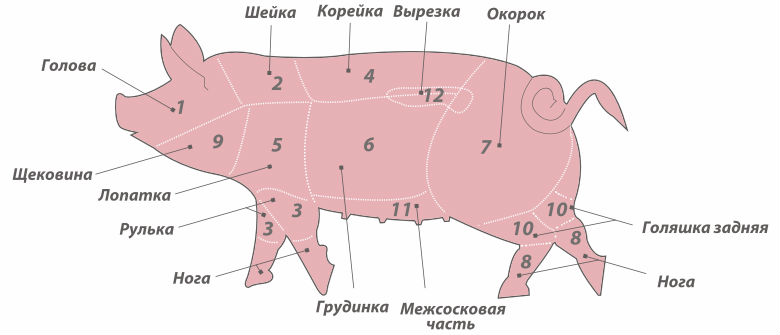
The average meat yield in pigs is considered to be from 60 to 70 kg with a live weight of an animal of 100 kg
Also, the sex of the pig affects the meat yield. A boar that has been castrated will produce slightly less meat than a pig of the same weight. The slaughter weight will be greater in those animals that the owner fed with a special compound feed and introduced into the diet of feed with substances useful for the animal.
Pig weight without weights
Those breeders who have a sufficient amount of experience in the farm, most often can easily determine the live weight of a pig, without resorting to weighing. In this case, the error varies within 10-15 kg.
First, you can determine the weight of the pig, taking into account the age, as well as the breed. For example, a dairy Vietnamese can weigh no more than 4 kg; in a large white pig, an equivalent baby reaches an average of 9 kg. When a pig breed is large, then by 3 months it can weigh up to 30 kg, after six months - up to 150 kg.
This definition is quite far from being accurate. The weight of the animal also depends on the correct keeping and feeding. If fed with household waste or potatoes, it will reach normal slaughter weight closer to 12 months.
There is another method. Its main principle is based on the fatness coefficient of the animal. Here's how you can calculate when choosing this method:
- With a strong thinness of the animal, its short stature and smallness, a coefficient equal to 162 is assigned;
- With sizes of more or less average - 156;
- When the mumps are well fed, their score is 142.
When calculating the weight, they resort to measuring the girth of the chest and the length of the animal. The resulting numbers are multiplied, after which they are divided by the desired coefficient. This result will be the average weight of the animal.
You can also use a formula that is pretty simple. The girth of the pig's chest is measured and multiplied by 1.54. The measured torso length is multiplied by 0.99. Then these results are summed up, 150 is subtracted from this figure. This will be the most accurate pork weight.
Weight measurement table
The pig weight table is a fairly accurate method, the error can be from 5 to 10% with this calculation method. In order to use it, it is necessary to take the same measurements of the pig as described above: body length and chest girth. The first is carried out with the help of a tape, starting from the base of the head and ending at the very base of the tail, in the area of the exit of the rectum. The second is made so that the measuring tape on one side adjoins the back base of the blades. Certain measurement parameters are extremely important in order to achieve maximum accuracy.
The table for measuring the weight of pigs is compiled after taking measurements, for this there are a number of conditions:
- During the procedure, the animal must be in a standing position;
- The head should be raised quite a bit up;
- It is necessary to measure 3 hours before the animals eat food.
In order to achieve the fulfillment of the first two conditions, they resort to some trick, to interest the animal. A small bowl of feed can be used by bringing it up to the pig at the required level. While the animal is trying to reach for food, the necessary manipulations are performed.
The obtained measurement indicators are inserted into the desired column and line in the prepared table. In the place where these parameters find their intersection, there will be a result, that is, a certain weight. The table can be printed and hung in a convenient place for you to always use it.
Here is an example of such a table.
Picture 1 Weight measurement table
How much does the sow weigh?
Weight can increase with the arrival of the warm season due to the appearance in the diet of green fodders, which are very useful and nutritious for these animals. In general, weight is highly dependent on the correct feeding and maintenance.
Tips from experienced pig breeders
When pigs are fattened specifically for meat, to increase their weight, feeding is usually divided into intensive feeding and less intensive feeding. With the latter, it will be difficult to get a large meat gain, since with such a diet, the animal reaches a weight of about 100 kg only by 10-12 months. Of the obvious advantages of this method, business executives call the minimum cost of feeding pigs, but the meat yield is also minimal. In this case, the owner uses only kitchen waste with a small proportion of compound feed for feeding.
Another method for meat performance is much more profitable in terms of the yield of meat products. By 8 or 9 months, the pig reaches a slaughter weight of 100-130 kg.
In general, pigs start feeding at a time when their weight is about 30 kg. This should be around the age of three months of the piglet. In terms of duration, fattening usually ranges from 4 to 5 months, but sometimes it takes a little longer. During this period, the piglet will add about 700 g per day.
Pigs are considered quite intelligent animals, and experienced business executives advise to treat animals as affectionately as possible to achieve a good result. Not only one correct feeding will help to grow a good pig out of a pig. An important point is the room in which the animals will be kept. It should be spacious and comfortable enough, good lighting is encouraged.
Young piglets not yet weaned from their mother's breast should be fed from the very first day, immediately after mother feeding. You can use cow's milk with the addition of chicken eggs.
In order for the meat of pigs to be soft and more tasty, it is necessary to use a large amount of greens in the feeding. Beet and carrot tops, garden weeds, or nettles are good choices. Place a tray filled with salt and charcoal near the feeder. Water for animals must certainly be fresh and clean.
Raising solid, healthy pigs in a personal household is a very real goal. It is enough to have a set of necessary knowledge in this area and perform the necessary actions in time. Then the yield of tasty and healthy pork will fully satisfy the needs of a well-done owner.
